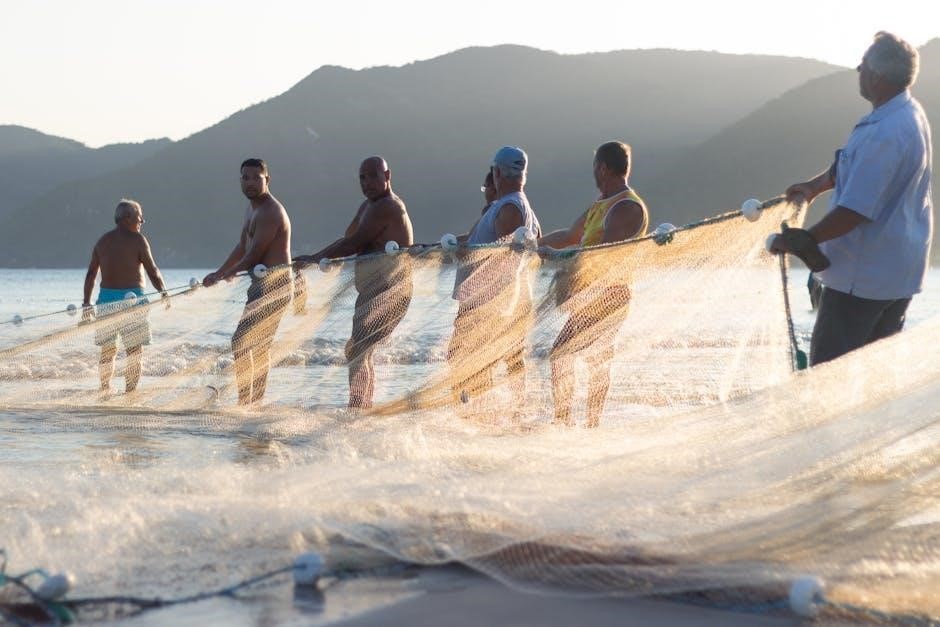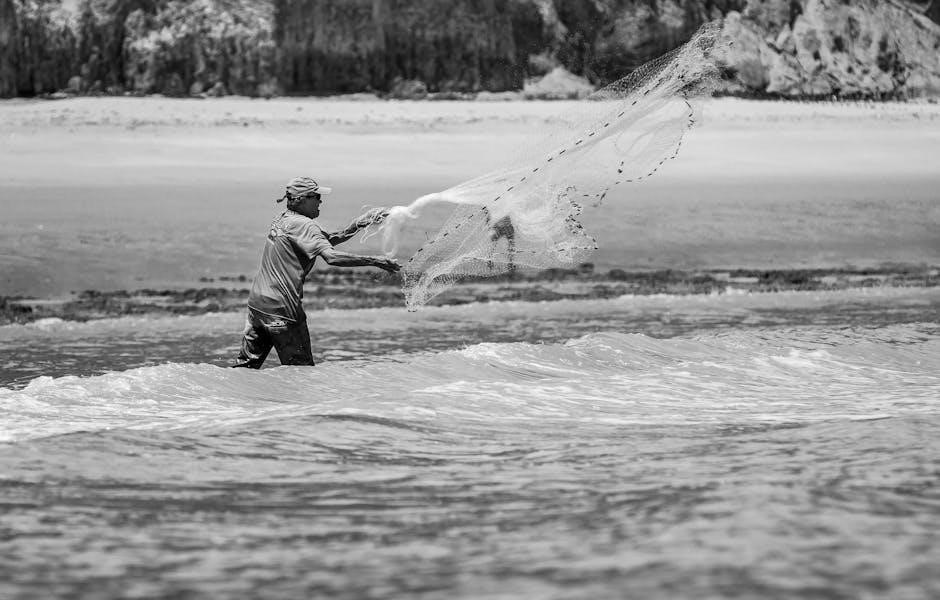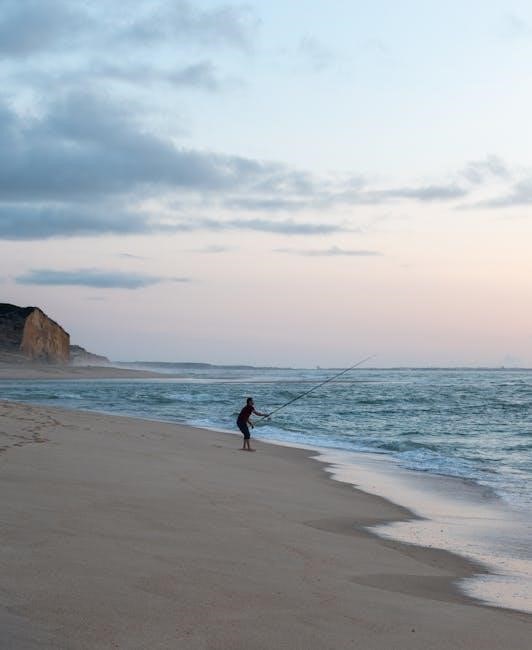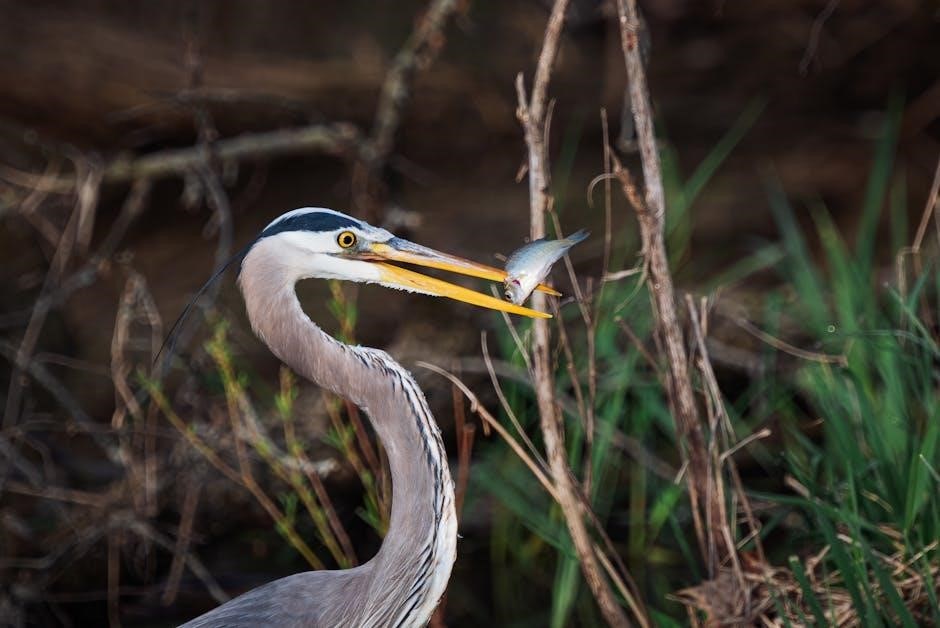Tipping Fishing Guides: A Comprehensive Guide
Are you planning a fishing charter and unsure of the tipping etiquette? As an experienced angler‚ you understand the value of exceptional service‚ but you may be wondering‚ to tip or not to tip?
Why Tipping Fishing Guides is Customary
Tipping a fishing guide is a customary way to show appreciation for their hard work and dedication in providing a great fishing experience. It’s a way to acknowledge their expertise‚ knowledge of the local waters‚ and the effort they put into ensuring your safety and enjoyment throughout the trip.
Guides often rely on tips to supplement their income‚ as it’s a significant part of their earnings. Tipping is considered standard practice in the service industry‚ and fishing guides are no exception. It’s a way to recognize their commitment to making your fishing trip memorable and successful.
By tipping‚ you’re also acknowledging the costs associated with running a fishing charter‚ such as boat maintenance‚ fuel‚ and equipment. It’s a way to contribute to the sustainability of the fishing guide’s business and ensure they can continue providing quality services to anglers.
Ultimately‚ tipping is a way to show gratitude for the guide’s efforts and express your satisfaction with the overall fishing experience.
Standard Tipping Percentage: 15-20%
When considering how much to tip a fishing guide‚ the generally accepted standard falls within the range of 15% to 20% of the total cost of the fishing trip. This percentage serves as a helpful guideline for expressing your appreciation for the guide’s services and effort.
If you received excellent service‚ the guide was knowledgeable and helpful‚ and you had a memorable fishing experience‚ tipping at the higher end of the range (20%) is appropriate. Conversely‚ if the service was satisfactory but not exceptional‚ a tip of 15% is still a thoughtful gesture.
Keep in mind that this percentage is a starting point‚ and you can adjust the amount based on factors such as the length of the trip‚ the guide’s level of experience‚ and the overall quality of the experience. Ultimately‚ the amount you tip should reflect your satisfaction with the guide’s services and your appreciation for their efforts.
Factors Influencing Tip Amount
Several factors can influence the amount you decide to tip a fishing guide. The quality of service is paramount; a knowledgeable‚ helpful‚ and attentive guide warrants a higher tip. Consider the trip length‚ as longer trips often involve more effort from the guide.
The guide’s effort in ensuring your safety‚ finding productive fishing spots‚ and assisting with techniques and strategies are valuable. Their friendliness and willingness to go the extra mile also contribute to the overall experience. Exceptional service deserves a more generous tip.
Conversely‚ if you experienced issues within the guide’s control‚ such as unprofessionalism or poor communication‚ you might adjust the tip accordingly. Remember to communicate any concerns constructively‚ as feedback can help guides improve their services. Ultimately‚ the tip amount should reflect your satisfaction and appreciation.

Quality of Service
The most significant factor influencing the tip amount is the quality of service provided by the fishing guide. This encompasses several aspects‚ including their expertise‚ knowledge of the local waters‚ and ability to locate fish. A guide who consistently puts you on fish‚ offers helpful advice and instruction‚ and demonstrates a genuine passion for fishing deserves a higher tip.
Consider the guide’s preparedness‚ professionalism‚ and communication skills. Were they punctual‚ well-equipped‚ and able to clearly explain techniques and strategies? Did they create a positive and enjoyable atmosphere throughout the trip? Exceptional service warrants a more generous gratuity‚ reflecting your appreciation for their efforts in making your fishing experience memorable.
Conversely‚ if the guide was unprepared‚ unhelpful‚ or lacked knowledge‚ you might consider adjusting the tip accordingly.

Trip Length (4-hour vs. 8-hour)
The duration of your fishing trip‚ whether a shorter 4-hour excursion or a full 8-hour day on the water‚ also plays a role in determining the appropriate tip amount. Longer trips typically involve more effort from the guide‚ requiring them to dedicate more time and energy to ensuring your success and enjoyment.
For a full-day (8-hour) trip‚ consider tipping towards the higher end of the standard 15-20% range‚ especially if the guide provided excellent service. A shorter (4-hour) trip may warrant a slightly lower percentage‚ but still within the customary range‚ provided the guide met your expectations and delivered a positive experience. Remember to factor in the guide’s effort and the overall quality of service when making your decision.
Regardless of trip length‚ always prioritize rewarding exceptional service that goes above and beyond.

Guide’s Effort and Friendliness
Beyond just catching fish‚ consider the guide’s overall effort and demeanor throughout the trip. Did they go the extra mile to find productive fishing spots‚ even when conditions were challenging? Were they patient and helpful in providing instruction and guidance‚ especially to novice anglers? A guide’s willingness to share their knowledge‚ offer personalized tips‚ and create a positive and enjoyable atmosphere significantly contributes to the overall experience.
A friendly and engaging guide who makes an effort to connect with you and your group deserves a higher tip. Conversely‚ a guide who seems disinterested‚ unhelpful‚ or even rude may warrant a lower tip‚ or none at all. Remember‚ tipping is a way to acknowledge and reward exceptional service and a positive attitude. A guide’s passion for fishing and dedication to ensuring your satisfaction should be reflected in your gratuity.
When to Tip: End of the Trip
Tipping your fishing guide is generally done at the end of the trip‚ after you’ve returned to the dock or reached the conclusion of your guided fishing experience. This allows you to fully assess the quality of service provided throughout the entire duration of the charter. It is customary to present the tip directly to the guide as a gesture of appreciation for their services and hard work.
Waiting until the end ensures you can factor in all aspects of the trip‚ including the guide’s expertise‚ effort‚ and overall attitude. It also provides an opportunity to express your gratitude personally. If you had multiple guides or crew members assisting you‚ you may distribute individual tips accordingly or provide a lump sum to be divided among them‚ as appropriate‚ at the conclusion of the trip.

Who to Tip: Guide vs. Mate/Crew
When considering who to tip on a fishing charter‚ it’s important to understand the roles of each person involved. Typically‚ the guide is the primary individual responsible for your overall fishing experience‚ and a tip is always appropriate for them if they do a good job.
However‚ if there’s a mate or additional crew member assisting on the trip‚ they should also be considered for a tip. The mate often handles tasks like baiting hooks‚ cleaning fish‚ and assisting with tackle‚ contributing significantly to your success and enjoyment.
In situations with both a guide and a mate‚ you can either distribute individual tips based on their respective contributions or provide a lump sum to the guide with instructions on how to divide it among the crew. If unsure‚ it’s always acceptable to ask the guide for clarification on the appropriate tipping protocol.
Tipping When Bringing Your Own Equipment
A common question arises regarding tipping when anglers bring their own equipment; Even if you provide your rods‚ reels‚ and tackle‚ tipping your fishing guide remains customary and highly encouraged. The guide’s expertise extends far beyond just providing gear.
They offer invaluable knowledge of local waters‚ fish behavior‚ and effective techniques‚ ensuring a productive and enjoyable experience. Their efforts in scouting locations‚ providing safety guidance‚ and assisting with fishing strategies are still valuable‚ regardless of whether you use their equipment or bring your own.
Think of the tip as an appreciation for their time‚ knowledge‚ and effort in making your fishing trip a success. The guide’s services contribute significantly to your overall experience‚ making a tip‚ even when using your own gear‚ a thoughtful gesture of gratitude.
Tipping Self-Employed Guides
When your fishing guide is self-employed‚ the question of tipping can feel a bit different. Unlike guides working for lodges who receive a percentage‚ a self-employed guide’s income relies heavily on the fee you directly pay them.
While the entire charter fee goes to them‚ remember that they also shoulder all the operational costs‚ including boat maintenance‚ fuel‚ insurance‚ and equipment. Therefore‚ tipping is still appropriate and greatly appreciated.
Consider it a way to acknowledge their expertise‚ hard work‚ and dedication in providing a memorable fishing experience. Even though they receive the full charter fee‚ a tip demonstrates your satisfaction and helps them offset the numerous expenses associated with running their own business.
A standard tip of 15-20% is still a good guideline‚ reflecting the quality of service and the overall experience.
Alternatives to Monetary Tips
While monetary tips are the standard way to show appreciation to a fishing guide‚ there are alternative options if you prefer or if circumstances make it difficult to tip with cash. One thoughtful alternative is to offer a valuable gift‚ such as high-quality fishing gear‚ a gift certificate to a local tackle shop‚ or even a homemade item.
Another option is to provide a glowing online review‚ which can significantly boost the guide’s business.
Word-of-mouth referrals are also invaluable‚ so recommending the guide to friends and fellow anglers can be a great way to show your gratitude.
Offering to help with tasks like cleaning the boat or gear can also be a kind gesture. Remember to consider what the guide would genuinely appreciate and find useful.
Cultural Variations in Tipping Practices
Tipping practices can vary significantly across different cultures and regions‚ and fishing charters are no exception. In some countries‚ tipping is deeply ingrained in the service industry‚ while in others‚ it’s less common or even considered unnecessary.
For instance‚ in North America‚ tipping fishing guides is generally expected‚ with the standard range being 15-20% of the trip cost. However‚ in some parts of Europe or Asia‚ tipping may not be as customary‚ and guides may not expect or rely on tips as a significant part of their income.
It’s always a good idea to research the local customs and industry standards before embarking on a fishing charter in a different country. Understanding the cultural norms surrounding tipping will help you navigate the situation with grace and respect‚ ensuring a positive experience for both you and your guide.
Handling a Negative Experience
While tipping is customary for good service‚ what happens when you have a negative experience? It’s important to address the situation thoughtfully and fairly. If the negative experience stems from factors within the guide’s control‚ such as unprofessionalism‚ poor communication‚ or lack of effort‚ you may consider adjusting the tip accordingly.
Withholding a tip entirely is an option in cases of truly egregious service. However‚ open communication is key. Express your concerns directly to the guide‚ providing constructive feedback. This allows them to understand the issues and potentially address them.
If the negative experience is due to factors beyond the guide’s control‚ such as bad weather or uncooperative fish‚ adjusting the tip may not be necessary. Remember‚ the guide cannot control nature. Evaluate the situation objectively and communicate respectfully to reach a fair resolution.
